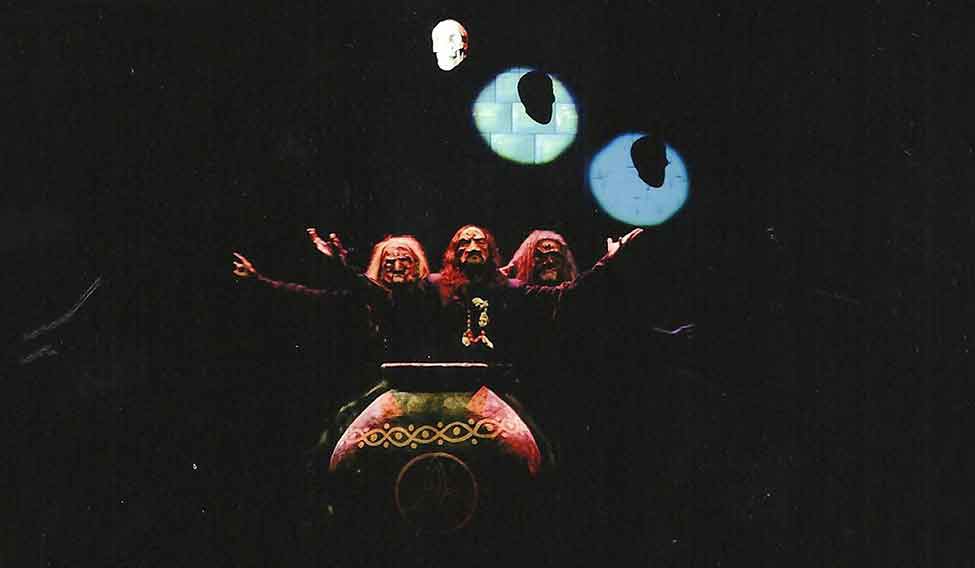Ever wondered if Lady Macbeth could be a tantra priestess who summons the witches to change Macbeth’s mind, and make him murder the king?
Of the myriad interpretations of Shakespeare’s works, the one that strikes a chord is Alyque Padamsee’s Macbeth, based on Indian metaphysical philosophy of tantra. The play opens with Lady Macbeth standing next to a five-foot cauldron emitting dense, dark smoke. As you observe her closely, you realise that she is reciting some tantric chants. Suddenly, the smoke from the cauldron rises and as it subsides, three witches appear as shadowy figures, with their skull necklaces knocking against each other, adding an extra beat to the rhythm of the chants. There is a soft murmur on the stage and the witches disappear into thin air.
It has been more than nine years since the play was first staged in India, but the memory of the opening scene is enough to make one nervous even today. Although the play was a visual treat with grand sets, spectacular lights, rich costumes and well-suited props, what stays with you is the darkness that surrounds the characters—psychologically and visually. The play was inspired by Shakti—The Feminine Force, a book that draws similarity between European witchcraft and tantra. Another aspect that sets the play apart from the other interpretations is that Lady Macbeth uses tantra to have her way with Macbeth.
Padamsee says he could never understand if the witches were real or mere fragments of Macbeth's imagination. If they were not real, then what could possibly make a loyal soldier murder his king? Padamsee sought the answer in tantra. He took help from Subhojit Dasgupta, a student of tantra, to explore the possibilities of deep connections between Shakespeare’s Macbeth and Indian mysticism. After all, both have roots in the philosophy that ‘something has to be destroyed for something new to be born’.
“If you remember Macbeth well, you’ll see how everything happens in one night,” says Padamsee. “The witches tell Macbeth that he is going to be king, Lady Macbeth convinces Macbeth to murder King Duncan and even the killing takes place. That is when I thought of Lady Macbeth as a much more powerful character than she is usually depicted. We all know she convinced Macbeth to carry out the murder, but what if all this was her plan to become the queen and the witches were her instruments to achieve success?”
In Padamsee’s interpretation, after Lady Macbeth invokes the witches and gets them to cast a spell on Macbeth who returns home full of doubts, she chants mantras, does a kind of a tantric ritual around him in bed and then they make love. The light fades. In the next scene, Macbeth is a changed man. For Padamsee, Macbeth is like Shiva and Lady Macbeth is Shakti, the stronger of the two. However, once she gives away all her dark powers to Macbeth, she is drained and doomed. When Macbeth murders the king, the witches reappear to crown him and his wife, and then later to perform the final dance around Macbeth’s severed head.
Excellent performances by Lushin Dubey as Lady Macbeth and Vijay Crishna as Macbeth made the play believable. Set designer Fali Unwalla captured the dark nature of tantra. Louis Banks’s original soundtrack, based on Raag Deepak, complemented the darker tones of the play. He used chants and hymns to keep the mood and rhythm consistent throughout the narration. The characters wore western costumes with Indian influence designed by Tarun Tahiliani. Most dresses had high notes of red, black and white, the colours generally associated with tantra.






